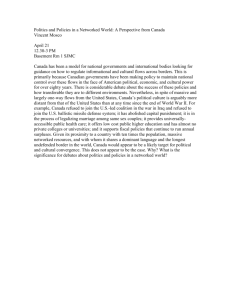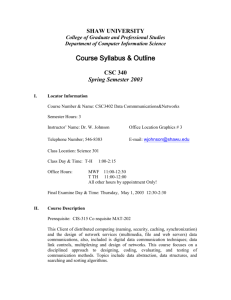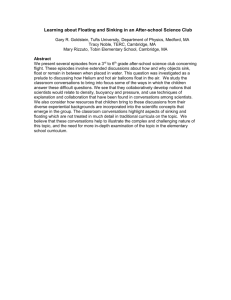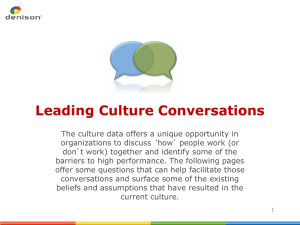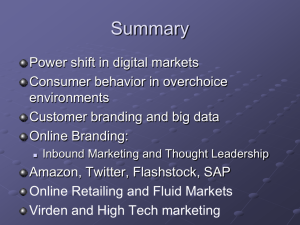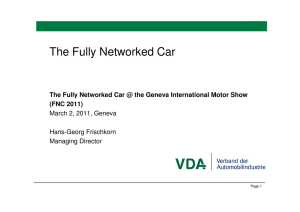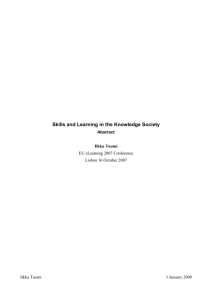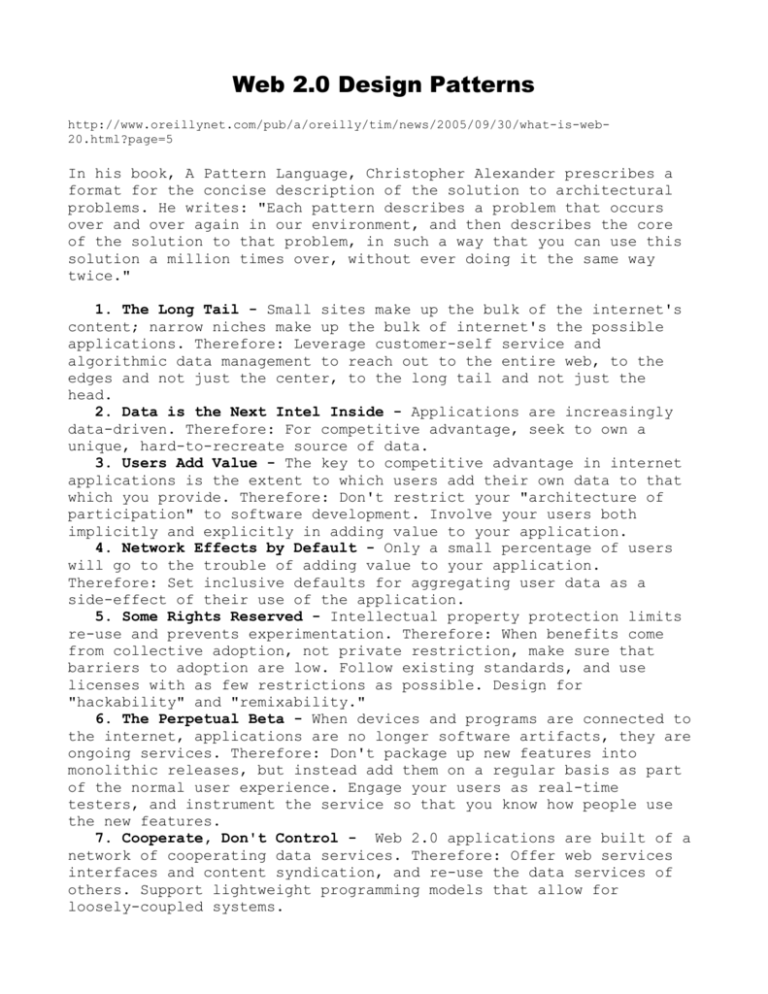
Web 2.0 Design Patterns
http://www.oreillynet.com/pub/a/oreilly/tim/news/2005/09/30/what-is-web20.html?page=5
In his book, A Pattern Language, Christopher Alexander prescribes a
format for the concise description of the solution to architectural
problems. He writes: "Each pattern describes a problem that occurs
over and over again in our environment, and then describes the core
of the solution to that problem, in such a way that you can use this
solution a million times over, without ever doing it the same way
twice."
1. The Long Tail - Small sites make up the bulk of the internet's
content; narrow niches make up the bulk of internet's the possible
applications. Therefore: Leverage customer-self service and
algorithmic data management to reach out to the entire web, to the
edges and not just the center, to the long tail and not just the
head.
2. Data is the Next Intel Inside - Applications are increasingly
data-driven. Therefore: For competitive advantage, seek to own a
unique, hard-to-recreate source of data.
3. Users Add Value - The key to competitive advantage in internet
applications is the extent to which users add their own data to that
which you provide. Therefore: Don't restrict your "architecture of
participation" to software development. Involve your users both
implicitly and explicitly in adding value to your application.
4. Network Effects by Default - Only a small percentage of users
will go to the trouble of adding value to your application.
Therefore: Set inclusive defaults for aggregating user data as a
side-effect of their use of the application.
5. Some Rights Reserved - Intellectual property protection limits
re-use and prevents experimentation. Therefore: When benefits come
from collective adoption, not private restriction, make sure that
barriers to adoption are low. Follow existing standards, and use
licenses with as few restrictions as possible. Design for
"hackability" and "remixability."
6. The Perpetual Beta - When devices and programs are connected to
the internet, applications are no longer software artifacts, they are
ongoing services. Therefore: Don't package up new features into
monolithic releases, but instead add them on a regular basis as part
of the normal user experience. Engage your users as real-time
testers, and instrument the service so that you know how people use
the new features.
7. Cooperate, Don't Control - Web 2.0 applications are built of a
network of cooperating data services. Therefore: Offer web services
interfaces and content syndication, and re-use the data services of
others. Support lightweight programming models that allow for
loosely-coupled systems.
8. Software Above the Level of a Single Device - The PC is no
longer the only access device for internet applications, and
applications that are limited to a single device are less valuable
than those that are connected. Therefore: Design your application
from the get-go to integrate services across handheld devices, PCs,
and internet servers.
(some of) The Cluetrain Manifesto's 95 Theses
read the other 71 at http://www.cluetrain.com/book/95-theses.html
1. Markets are conversations.
2. Markets consist of human
beings, not demographic sectors.
3. Conversations among human
beings sound human. They are
conducted in a human voice.
4. Whether delivering
information, opinions,
perspectives, dissenting arguments
or humorous asides, the human voice
is typically open, natural,
uncontrived.
5. People recognize each other
as such from the sound of this
voice.
6. The Internet is enabling
conversations among human beings
that were simply not possible in
the era of mass media.
7. Hyperlinks subvert hierarchy.
8. In both internetworked
markets and among intranetworked
employees, people are speaking to
each other in a powerful new way.
9. These networked conversations
are enabling powerful new forms of
social organization and knowledge
exchange to emerge.
10. As a result, markets are
getting smarter, more informed,
more organized. Participation in a
networked market changes people
fundamentally.
11. People in networked markets
have figured out that they get far
better information and support from
one another than from vendors. So
much for corporate rhetoric about
adding value to commoditized
products.
12. There are no secrets. The
networked market knows more than
companies do about their own
products. And whether the news is
good or bad, they tell everyone.
13. What's happening to markets
is also happening among employees.
A metaphysical construct called
"The Company" is the only thing
standing between the two.
14. Corporations do not speak in
the same voice as these new
networked conversations. To their
intended online audiences,
companies sound hollow, flat,
literally inhuman.
15. In just a few more years, the
current homogenized "voice" of
business—the sound of mission
statements and brochures—will seem
as contrived and artificial as the
language of the 18th century French
court.
16. Already, companies that speak
in the language of the pitch, the
dog-and-pony show, are no longer
speaking to anyone.
17. Companies that assume online
markets are the same markets that
used to watch their ads on
television are kidding themselves.
18. Companies that don't realize
their markets are now networked
person-to-person, getting smarter
as a result and deeply joined in
conversation are missing their best
opportunity.
19. Companies can now communicate
with their markets directly. If
they blow it, it could be their
last chance.
20. Companies need to realize
their markets are often laughing.
At them.
21. Companies need to lighten up
and take themselves less seriously.
They need to get a sense of humor.
22. Getting a sense of humor does
not mean putting some jokes on the
corporate web site. Rather, it
requires big values, a little
humility, straight talk, and a
genuine point of view.
23. Companies attempting to
"position" themselves need to take
a position. Optimally, it should
relate to something their market
actually cares about.
24. Bombastic boasts—"We are
positioned to become the preeminent
provider of XYZ"—do not constitute
a position.
Some Library 2.0 Formulations
Ken Chad & Paul Miller from TALIS
http://www.talis.com/downloads/white_papers/DoLibrariesMatter.pdf
The
The
The
The
library
Library
library
library
is everywhere.
has no barriers.
invites participation.
uses flexible, best-of-breed systems.
ACRL Blog
http://acrlblog.org/2005/12/05/what-do-you-know-about-weblib-20/
The Library Facilitates the User’s Discovery of Their Many
Information Options and How to Choose Wisely From Among
Them.
The Library Integrates Itself Into Those Places, Physical
and Virtual, Where Learning Takes Place.
Michael Stephens
http://www.techsource.ala.org/blog/blog_detail.php?blog_id=95
The library encourages the heart.
The library is human.
The library recognizes that its users are human too.
Wikipedia Entry: Library 2.0
http://en.wikipedia.org/wiki/Library_2.0
Browser + Web 2.0 Applications + Connectivity = Fullfeatured OPAC
Harness the library user in both design and implementation
of services
Library users should be able to craft and modify library
provided services
Companies wanting to do business with libraries should not
be creating proprietary hardware; Library 2.0 is not a
closed concept.
Constant change is replacing the older model of upgrade
cycles
Beta is forever
Harvest and integrate ideas and products from peripheral
fields into library service models
Continue to examine and improve services and be willing to
replace them at any time with newer and better services.
Library 2.0 is a disruptive idea
Rigidity breeds failure
Harness the long tail
adapted from:
http://tametheweb.com/2005/12/the_collected_principles_of_li.html


